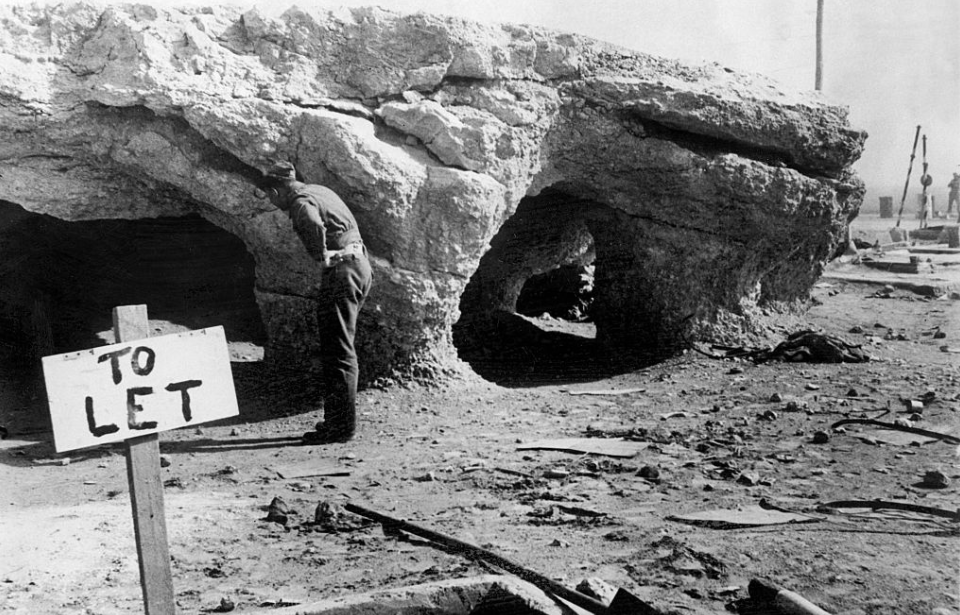During the Second World War, a remarkable and brave group of Australian soldiers became known as the “Rats of Tobruk” for their tenacious defense of the Libyan port city against the Axis forces. Faced with relentless enemy bombardment and harsh living conditions, these brave men devised a unique survival strategy: living underground and in caves.
Tobruk, located on the eastern coast of Libya, became a strategic target for the Axis powers in 1941. Australian troops, along with British and other Allied soldiers, found themselves surrounded and vastly outnumbered during the port city’s siege. Determined to hold their ground, they resorted to utilizing the abandoned underground defensive positions created by the Italians prior to the war. These makeshift dwellings provided protection from the scorching desert heat and relentless enemy bombings.
The above photo shows an Allied soldier checking out one of these cave dwellings with a cheeky sign in front, which reads, “TO LET.” Although this image was taken on March 28, 1942, well after the siege, there’s no doubt this cave was used by the Rats of Tobruk.
Despite heavily using these underground dwellings, these soldiers constantly ventured out on raids. While effective for defense, life in the caves was far from luxurious. They endured cramped quarters, limited ventilation, illness, and decreased access to food and water. Their resourcefulness and ingenuity allowed them to withstand these rather harsh conditions, holding their position in Tobruk, even when outnumbered by the enemy 2:1.
Are you a fan of all things ships and submarines? If so, subscribe to our Daily Warships newsletter!
Lt. Leslie Morshead was ordered to hold the city for eight weeks with these numbers. Instead, he and the Rats of Tobruk were able to do so for a staggering five months.
